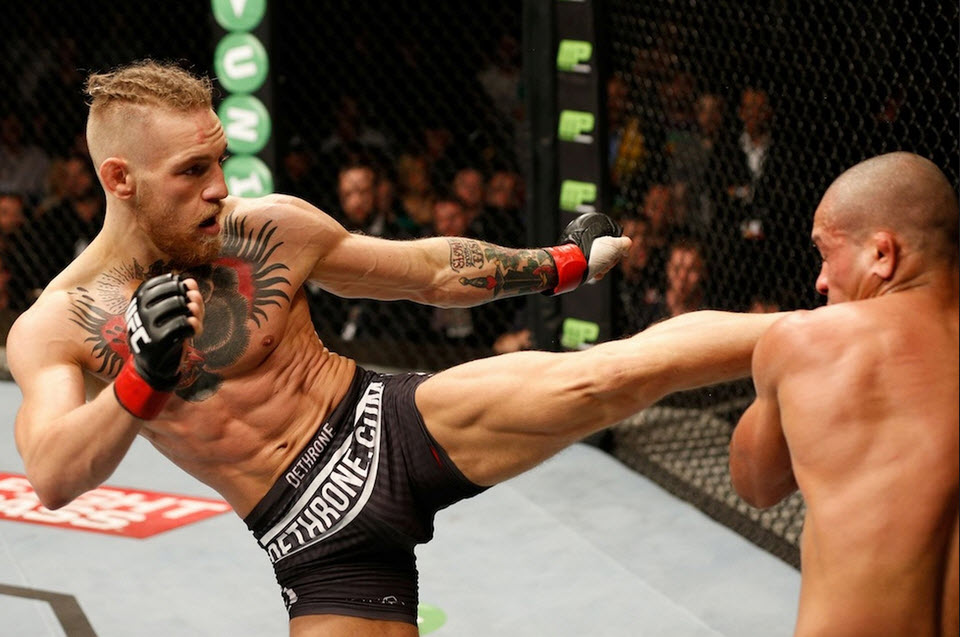
Light Sparring to Integrate Skills
October 05, 2015
One of my students is about the graduate from UC Berkeley and move back to LA, and I don’t know if he will continue his training, so I’m trying to sort of wrap it up for him and tie all of his skills together in a nice bow and make him as ready as possible for a real life encounter.
He’s been training with me for a few years, but only during the semester and only an hour or so a week, so let’s call it about the equivalent of a year of training in a normal Wing Chun school, minus access to a dummy or poles or most other equipment.
We use some striking pads and a shield a little bit but that’s about it.
We train in our street clothes, which we do by necessity but I also think it helps make it more natural. I usually train at Greg’s school in street clothes as well, even though this often often ends with me a sweaty mess.
I’m pretty proud of how far my student has come along. The whole thing has been an experiment of sorts — whats the best way to teach Wing Chun. I taught them the forms (SLT and Chum Kiu) but we do them pretty irregularly (I would be shocked if they do them at home). We only train a half an hour at a time (my lunch break).
Since I hurt my shoulder earlier this year, we’ve been working around my injury (I can’t do Chi Sao at the moment, really). We have been doing various sorts of slower flow drills.
I demoed some of the drills I’ve been doing in another post , and lately I’ve been doing a broader drill which I adopted more consciously after watching the new Interim Flyweight champ Conner McGregor on The Ultimate Fighter TV Show.
Here is the scene from The Ultimate Fighter .
McGregor is interesting to me not only for his Ali-like cockiness and charisma but for his demonstration that Tae Kwan Do can work in the ring (and by extension the street). He also studied Karate, Capoeira and Kickboxing.
I always knew it could work (I’ve witnessed badass TKD guys, especially Koreans), but its cool to see it demonstrated. If you watch his fights, check out how he picks his opponents apart from the outside with his round house kick and his spinning back kick and his front kick. But, when it goes close he has good boxing and if it goes to the ground, he has good recovery skills getting up and not stellar but an acceptable and very aggressive ground game.
These were the holes in my TKD game – I couldn’t handle boxing or close ranges — I had to hang back plus I didn’t have to nerve to actually kick someone in a real fight. This is why I took up Wing Chun, to learn how to handle the closer range.
Often in The Ultimate Fighter , the coaches feel it is their job to start training the fighters under their care as if they were in a camp.
McGregor explains that he feels his job is to keep them fresh and uninjured but get their minds right.
This means sparring in a light and loose way that is unlikely to burn them out or get anyone hurt but which gives them the opportunity to get in the mindset of picking and striking targets while avoiding getting hit as much as possible.
In Wing Chun, that means attack, attack, attack (our defense).
I like this drill as a means of getting the fighter to think about merging all the different skills they’ve been trained in one at a time and to start moving from one thing to another.
In our school, this really kicks in in the last 10% of the training, where we start blending between Chi Sao and Gwoh Sao and freely applying all the elements (pushing, pulling, kicking, stepping, standing grappling, and of course striking) in a jazz-like two person improvisation. Of course, this can be very dangerous unless you’re very careful, have a lot of control, and are working with a skilled and trusted training partner.
This lighter drill is one way to start wading into the shallow end of this blending of skills and thinking about how Wing Chun works in real fighting and beginning to work on problems like spanning the fighting distances from outside kicking range to getting into Wing Chun (Tan) range and dealing with the surprise of kicks and hooks and so on.
Of course, when we play these games, we have to take care of our partner!
I filmed some training today but the camera didn’t record – duh! I’ll try again tomorrow and post it, to demo how I’ve been using this method to train Wing Chun.
